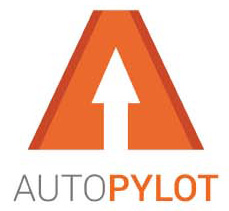With more data and less facetime available than ever before, salespeople are rapidly adjusting to life in a post(?) pandemic world. And while a lot has been made of “the new normal,” the fact is: we simply don’t know what that will yet be. Add to that persistent supply chain management challenges, a global economy in flux, and unparalleled workforce turnover, and it’s clear that smart salespeople are finding ways to rapidly adapt their methodology.
Here’s a quick look at 5 key ways they’re doing just that in 2022 …
- Selling in a remote / hybrid world: The good news? Over 90% of salespeople are at least somewhat confident that they will be able to adjust to a “screen first” world and pivot away from a methodology that once relied heavily on in-person meetings. The less good news? Everyone is overwhelmed – not just salespeople, but clients and prospects too, which can impact sales cycles. Smart sellers are empathetic to this reality and understand that, while screen time may not be the traditional ideal, working in a digital-first environment, with its plethora of available data points, can be a boon for sales.
- The informed buyer: This is the age of self-serve (case in point: McDonalds). Everything from buying our booking a vacation to buying a set of glasses to, now, making a business purchase. Buyers want to do their own research, make up their own mind, and then quickly and easily complete a purchase. Case in point: 60% of B2B buyers indicate that they do not want to be contacted until they are in the consideration stage and narrowed down options to a short list of vendors.
- The ‘get informed now’ seller: Buyers have made it clear that they prefer to learn on their own and are less appreciative of what they can view as coercive sales tactics. As such, smart sellers need to get informed about their buyers – stat. Investment in sales technology has grown rapidly in recent years, with salespeople indicating that the number of online tools they use to close a deal growing 300% in recent years. And while the availability of all this digital data is a good start, it can’t replace good old-fashioned research and know-how. In fact, 44% of buyers say that their salesperson loses the deal when they show a lack of understand of the client’s business and desires.
- Getting informed means greater sales and marketing collaboration: “Data is table stakes now,” expect when you don’t have good data (which, let’s be honest, is more frequent than we care to admit). Working with your marketing counterparts is the best way to get a full sense of your prospects’ purchasing journey, particularly when both organizations commit to using a CRM tool to track activity from the first touch all the way through to cross selling and upselling, allowing you to understand the milestones in that journey – what messages resonated more than others, what information on the website do they care about, how to leverage other online behavior to deliver a timely message.
- Communicate more, but make it personal: If you’re not on LinkedIn yet, you probably should be. 31% of sales pros say social selling – leveraging social media platforms to share timely information and content – has enabled them to build deeper relationships with clients and prospects. Social media has increasingly become a very personal medium – through which a host of our psychological needs are met (for better or worse). For smart sellers, it’s not just about the medium itself, it’s about the opportunity to make a more personal connection with prospects – which buyers expect.
All of this means sales people are going to be busier than ever, with less time available for administrative work, which means employing tools to help accelerate productivity is one of the smartest moves a sales force can make.
To learn more about how AutoPylot can automate your CRM processes, watch our video.
